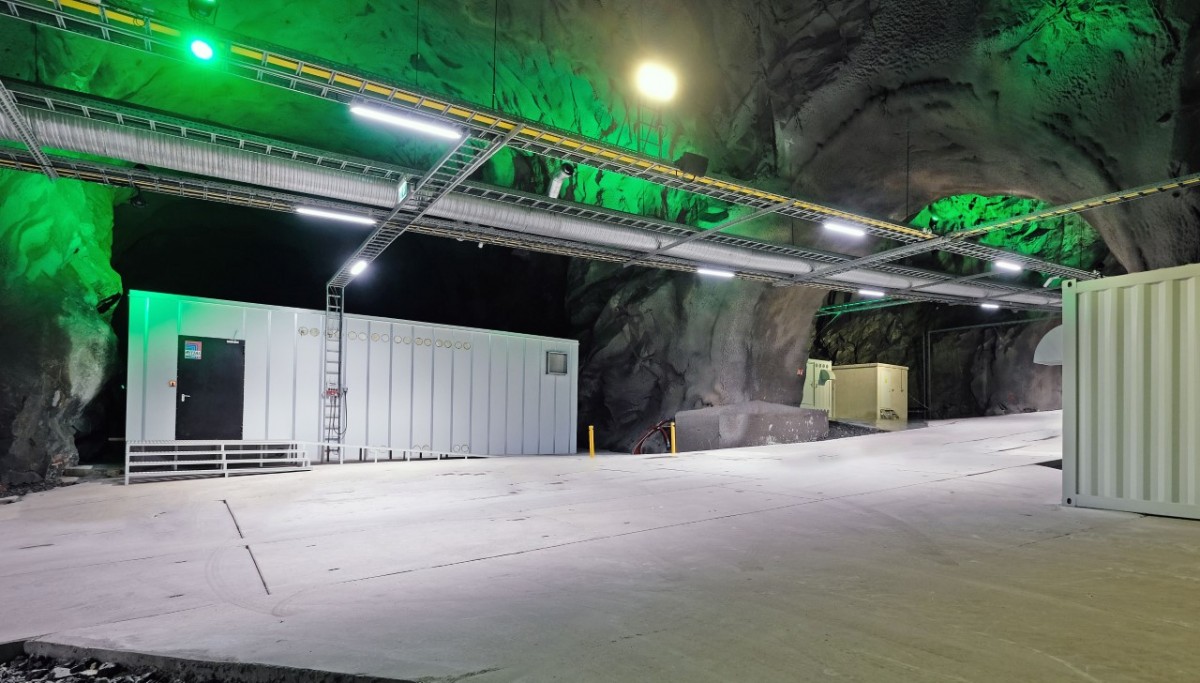Mining hall to be home to national supercomputers
Sigma2 owns the national supercomputers and storage facilities in Norway and works closely with the universities of Oslo, Tromsø, Bergen and NTNU. This collaboration is called NRIS (Norwegian research infrastructure services) and existing hardware is located at the universities. Future systems will now be housed by Lefdal Mine Datacenter (LMD), which will provide economies of scale, access to space and flexibility in upscaling the e-infrastructure.
LMD uses the old Lefdal mine facilities located between Måløy and Nordfjordeid in Vestland county. The mine, which has previously been used for the extraction of olivine, is gigantic and extends over 120,000 square meters into the mountain, spread over many levels. This provides very high general and physical security for the computer systems placed there.
Research environments from climate and marine research to language, energy, and health will benefit from this and several large and important research centres. The latest in the series is dScience at the University of Oslo, which opened last week.
Heat reuse contributes to local business
LMD started as a data centre supplier in 2017 and has several large foreign customers. Many have moved their computer systems to Norway due to access to affordable, renewable energy with significantly lower carbon footprints per kilowatt-hour used. Sigma2 will be LMD’s largest Norwegian customer. Although it has not been part of the tender basis, long-term forecasts from Statskraft and NVE show that the northern part of the western region will continue to be advantageous in terms of energy costs also in the future.
High-performance computer systems such as the national supercomputers almost always involve 100% utilization of the processors day and night. The surplus energy provides considerable heat and requires cooling to avoid overheating. Data centres such as LMD, located close to a fjord, have a low energy cost for cooling because cold water can be taken from the fjord and the return water can be reused. LMD has signed an agreement with Sjømatstaden, which operates marine food production nearby and will use return water from the data centre in its production.
- The need for computing capacity and storage services are constantly increasing and this data centre is an important building block for supporting infrastructure for research. This is a good example of how public actors can enter cooperation with the business community. Here, Norway is being rigged for a technological future, while at the same time making use of regional competitive advantages and business, says Minister of Research and Higher Education Ola Borten Moe.
Minister of Local Government and Regional Development, Bjørn Arild Gram also believes this is important:
- This will contribute to strengthening the national infrastructure for research, and at the same time shows the value of having robust and secure data centres in Norway. We need a lot of computing power and a solid digital infrastructure to solve several important challenges in the future. At the same time, this shows how advanced public infrastructure for research can help create local jobs and activity in the regions.
High scores in the tender competition
In the tender competition, LMD received the highest score on the technical, environmental, and social assessments. In social assessment, emphasis is placed on the use of local labour and raw materials. LMD uses several companies in the region to perform service functions in the data centre. They also won on costs.
- This agreement entails the basic idea of establishing Lefdal Mine Datacenter and is a direct result of many years of dedicated work in the Nordfjord region. Sigma2 has carried out a thorough process, and we know that competing data centres in Norway also have very good solutions. That Lefdal Mine Datacenter pulled the longest straw makes me humble and proud to be part of a fantastic environment of colleagues, suppliers, and other local and regional supporters, says Jørn Skaane, general manager of LMD.
One of the main reasons for choosing an external data centre provider is to ensure scalability, predictability, and favourable terms in the future. The tender competition has shown that external data centre suppliers perform well in terms of price level compared with the current solution at the university partners, where it can be challenging in terms of cost to adapt area and physical infrastructure to constantly house larger facilities. The universities were therefore not in the competition this time. A total of seven data centres, identified in a report from the Ministry of Local Government and Modernisation in 2020, were invited into the competition.
The first Sigma2 facility to enter the mining hall is the new national storage system NIRD (National Infrastructure for Research Data), which will be installed during the first half of 2022. There will be no moving of existing systems. The first supercomputer is expected to be installed at the data centre in 2023.




